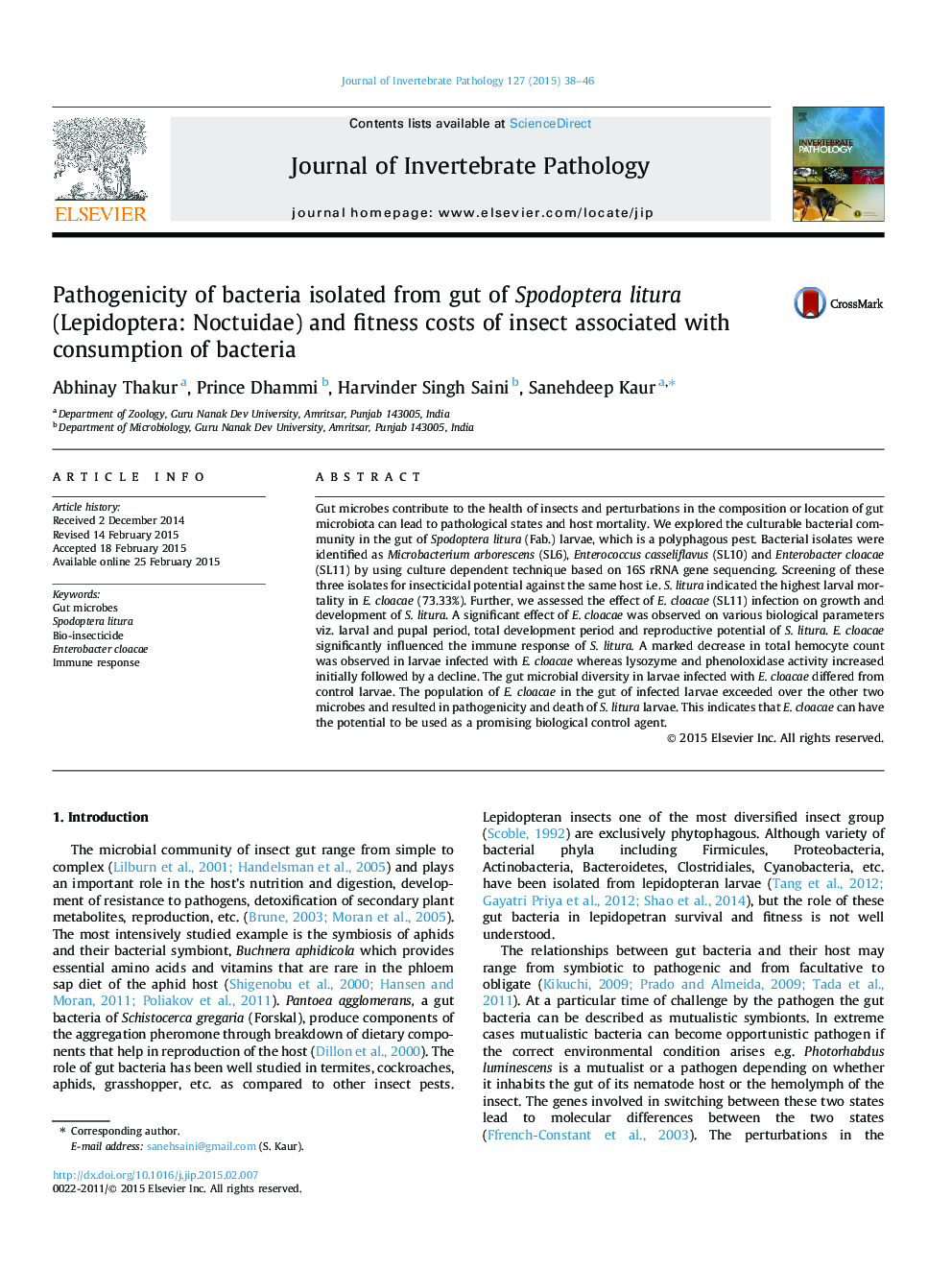| Article ID | Journal | Published Year | Pages | File Type |
|---|---|---|---|---|
| 4557638 | Journal of Invertebrate Pathology | 2015 | 9 Pages |
•M. arborescens, E. casseliflavus and E. cloacae were isolated from gut of S. litura.•Screening results showed that E. cloacae had maximum insecticidal potential.•E. cloacae infection significantly affected growth and development of S. litura.•E. cloacae also significantly influenced the immune response of S. litura.
Gut microbes contribute to the health of insects and perturbations in the composition or location of gut microbiota can lead to pathological states and host mortality. We explored the culturable bacterial community in the gut of Spodoptera litura (Fab.) larvae, which is a polyphagous pest. Bacterial isolates were identified as Microbacterium arborescens (SL6), Enterococcus casseliflavus (SL10) and Enterobacter cloacae (SL11) by using culture dependent technique based on 16S rRNA gene sequencing. Screening of these three isolates for insecticidal potential against the same host i.e. S. litura indicated the highest larval mortality in E. cloacae (73.33%). Further, we assessed the effect of E. cloacae (SL11) infection on growth and development of S. litura. A significant effect of E. cloacae was observed on various biological parameters viz. larval and pupal period, total development period and reproductive potential of S. litura. E. cloacae significantly influenced the immune response of S. litura. A marked decrease in total hemocyte count was observed in larvae infected with E. cloacae whereas lysozyme and phenoloxidase activity increased initially followed by a decline. The gut microbial diversity in larvae infected with E. cloacae differed from control larvae. The population of E. cloacae in the gut of infected larvae exceeded over the other two microbes and resulted in pathogenicity and death of S. litura larvae. This indicates that E. cloacae can have the potential to be used as a promising biological control agent.
Graphical abstractFigure optionsDownload full-size imageDownload as PowerPoint slide
